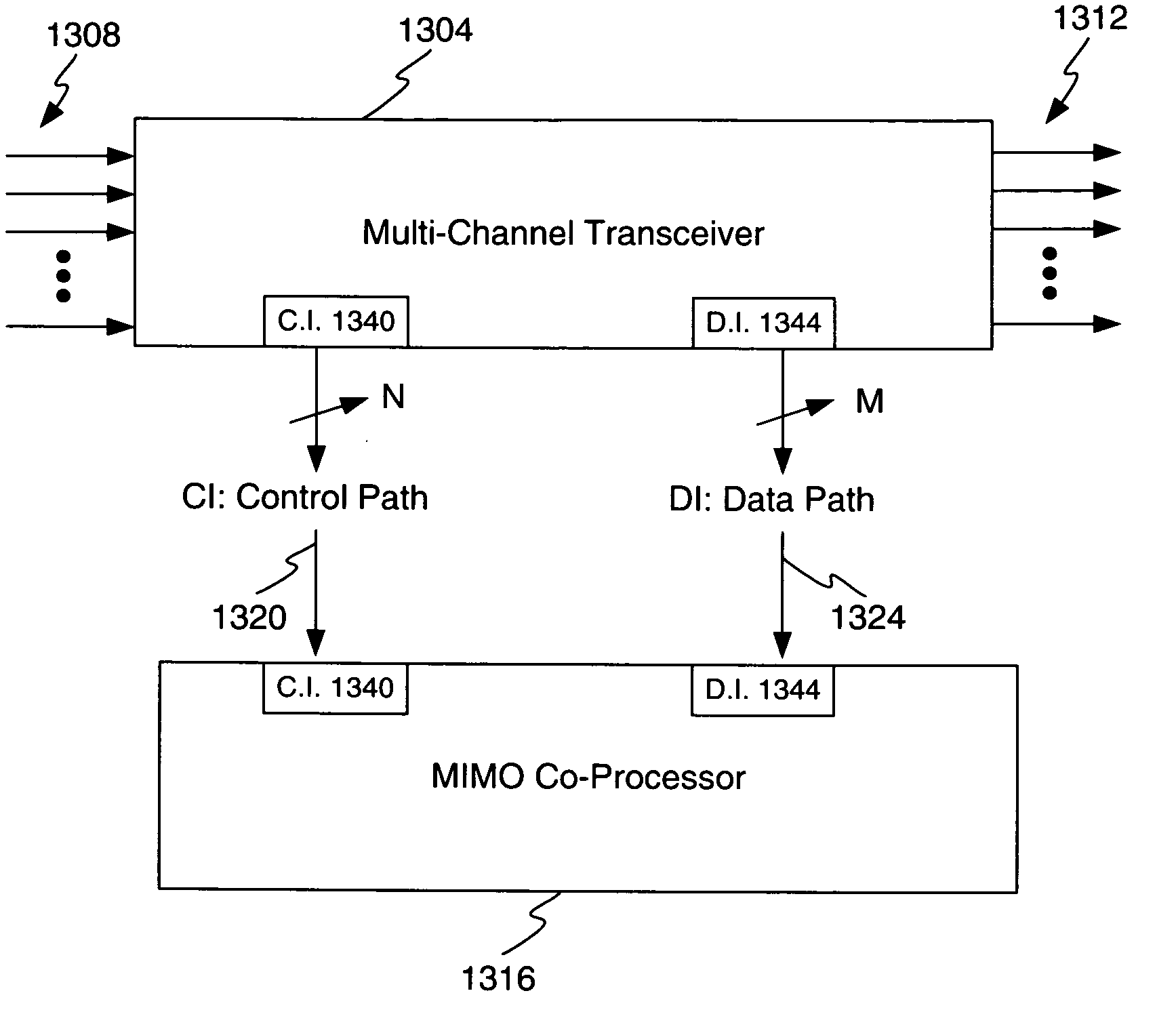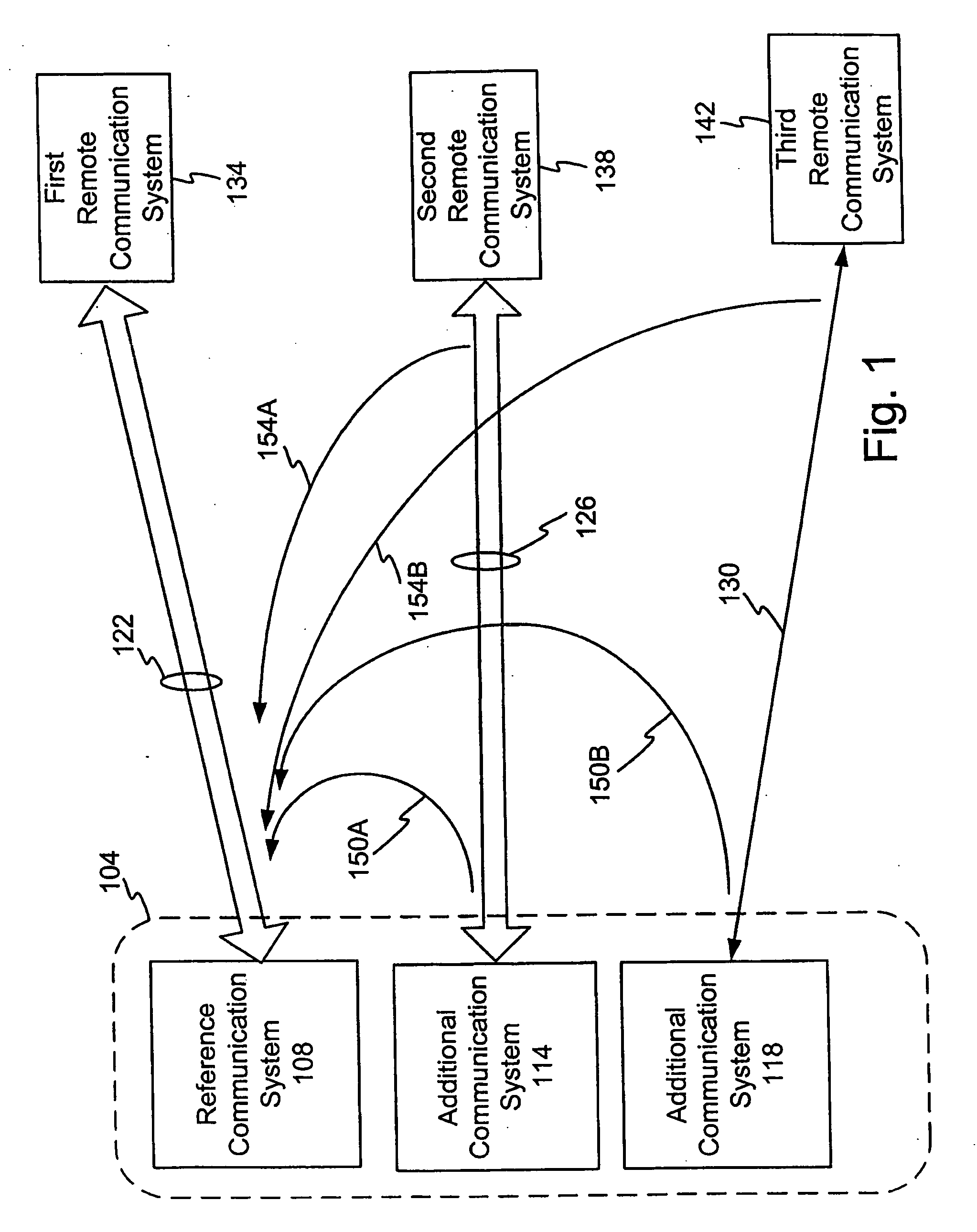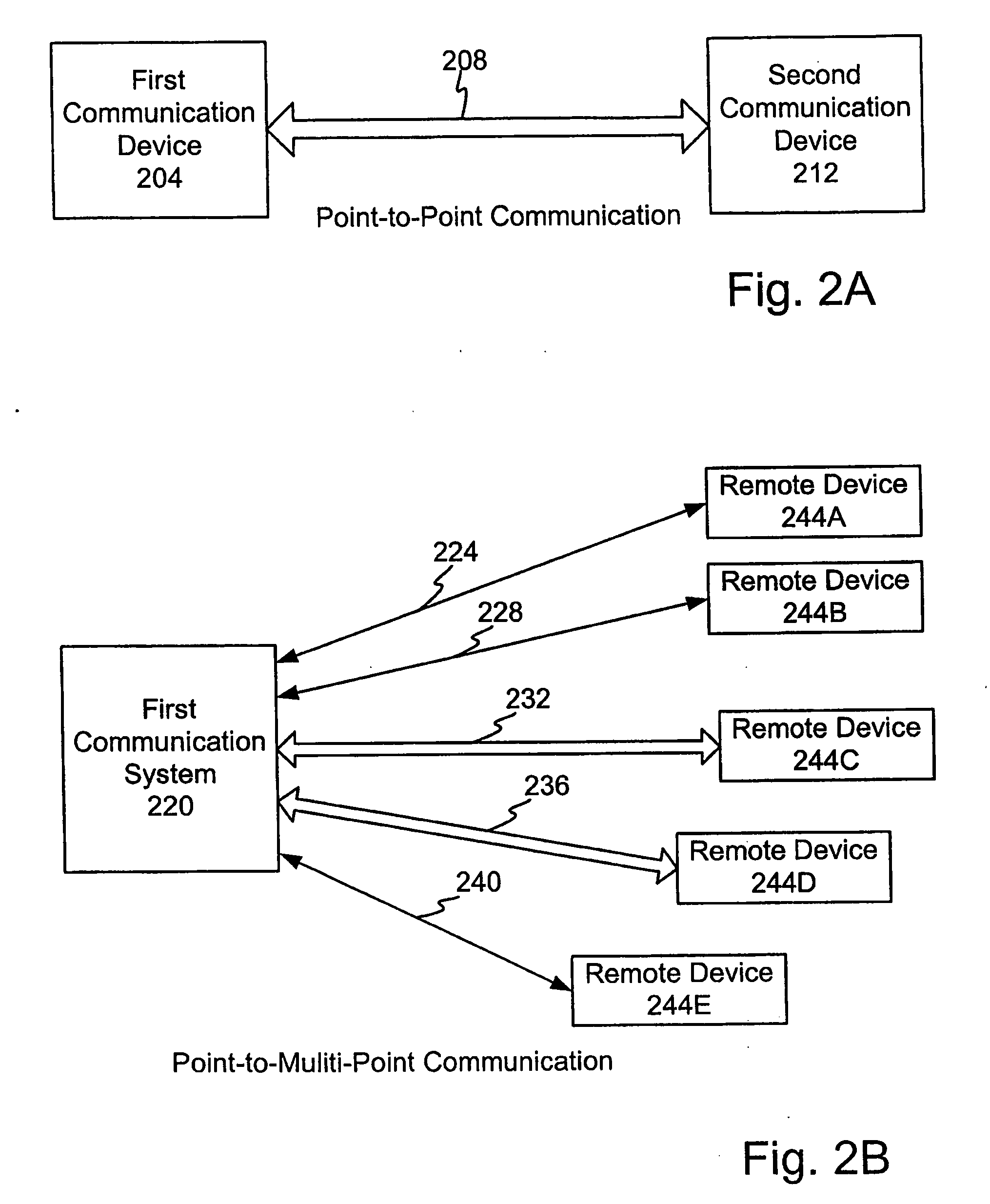Efficient multiple input multiple output signal processing method and apparatus
a signal processing and multiple input technology, applied in the direction of line-transmission details, duplex signal operation, cross-talk reduction, etc., can solve the problems of alien crosstalk, affecting often a major degradation factor limiting the performance of communication systems, etc., to remove crosstalk and/or other interferen
- Summary
- Abstract
- Description
- Claims
- Application Information
AI Technical Summary
Benefits of technology
Problems solved by technology
Method used
Image
Examples
Embodiment Construction
[0040]Before discussing the particulars of the claimed method and apparatus, a discussion of example environments for use of the invention may aid the reader in their understanding. FIG. 1 illustrates an example environment of use in accordance with one or more embodiments of the present disclosure. FIG. 1 is provided by way of a non-limiting example, and the embodiments disclosed herein should not be limited to environments of use shown in FIG. 1. As shown a plurality of communication systems or stations is shown, each of which communicates over one or more channels. In particular, located at a first location 104, such as a central office or internet service provider, is a reference communication system 108. In addition, one or more additional communications systems 114, 118 may also be located at the first location 104. The term reference communication system 108 is defined to mean the communications system under design or from which crosstalk analysis occurs. It is contemplated t...
PUM
 Login to View More
Login to View More Abstract
Description
Claims
Application Information
 Login to View More
Login to View More - R&D
- Intellectual Property
- Life Sciences
- Materials
- Tech Scout
- Unparalleled Data Quality
- Higher Quality Content
- 60% Fewer Hallucinations
Browse by: Latest US Patents, China's latest patents, Technical Efficacy Thesaurus, Application Domain, Technology Topic, Popular Technical Reports.
© 2025 PatSnap. All rights reserved.Legal|Privacy policy|Modern Slavery Act Transparency Statement|Sitemap|About US| Contact US: help@patsnap.com



